Market Mixed as S&P 500 Inches Higher, Nvidia Drags Tech, and Strong US Data Eases Recession Fears | Daily Market Analysis
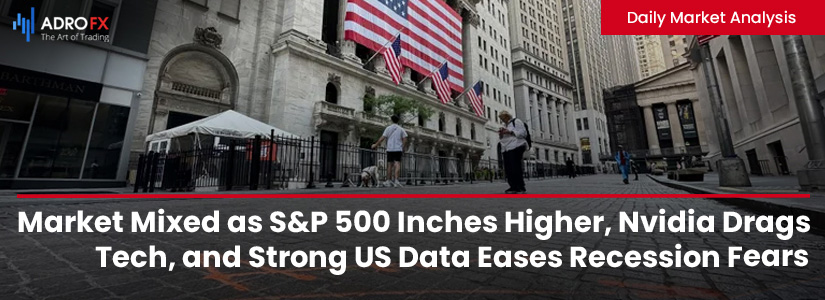
Key events:
- Eurozone - CPI (YoY) (Aug)
- USA - Core PCE Price Index (MoM) (Jul)
- USA - Core PCE Price Index (YoY) (Jul)
- USA - Chicago PMI (Aug)
The S&P 500 managed to close slightly higher on Thursday, despite a pullback in tech stocks led by Nvidia, as strong economic data from the US helped ease recession concerns and limit downward pressure.
By the close of trading, the Dow Jones Industrial Average increased by 143 points, or 0.6%, the S&P 500 edged up by 0.1%, while the NASDAQ Composite dipped 0.2%.
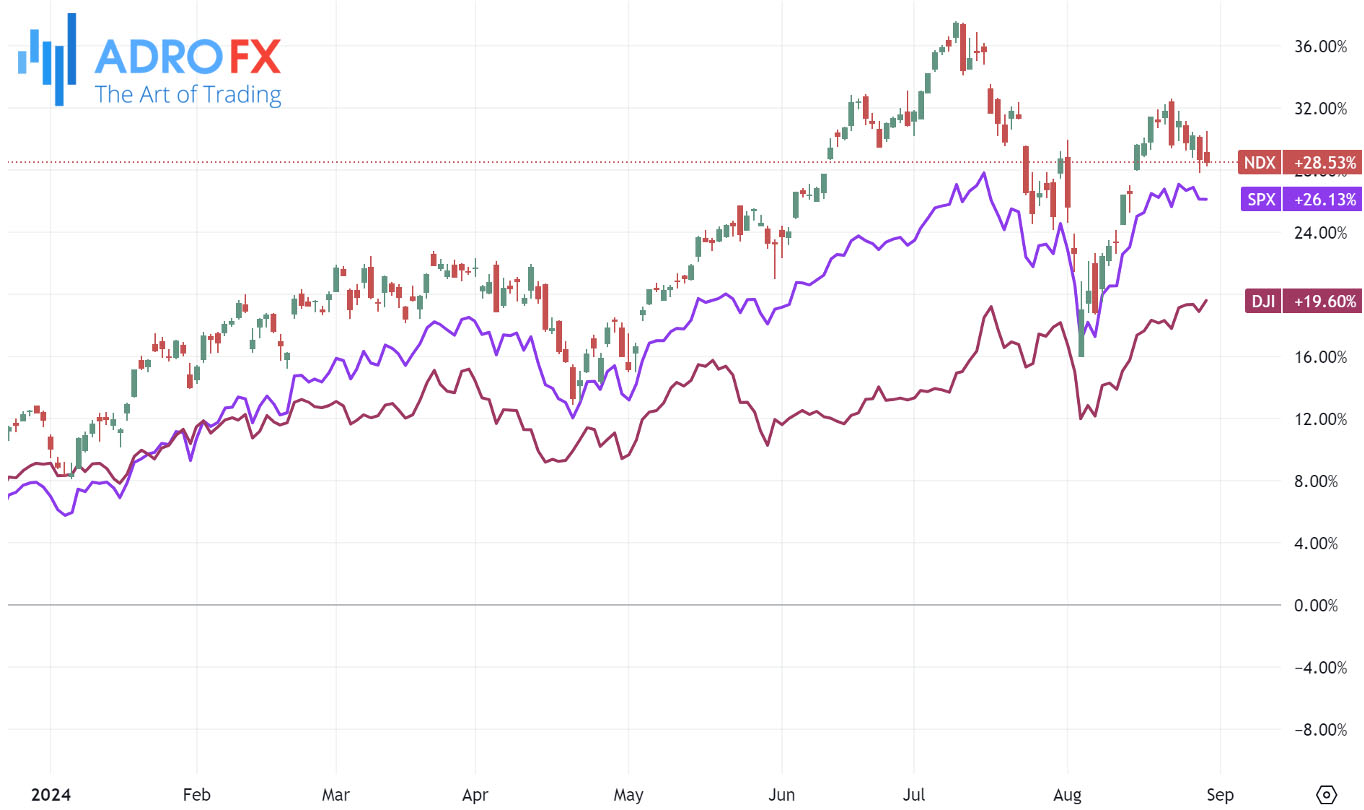
Nvidia dropped over 6% after providing guidance that fell short of expectations, despite reporting stronger-than-anticipated earnings for the May-July period and announcing a $50 billion share buyback plan. However, Wall Street analysts remain optimistic about Nvidia, pointing to strong demand for the company’s AI chips, including the upcoming Blackwell chips expected to launch in Q4. Apple Inc. finished more than 1% higher following reports from the Wall Street Journal that the tech giant is in discussions to invest in OpenAI.
Gold prices lost momentum on Friday due to a stronger US Dollar. Positive US growth data and lower-than-expected initial jobless claims have reduced the likelihood of a deeper Federal Reserve rate cut in September, putting pressure on the non-yielding metal. However, ongoing geopolitical tensions in the Middle East and the conflict between Russia and Ukraine could bolster safe-haven demand, potentially supporting gold.
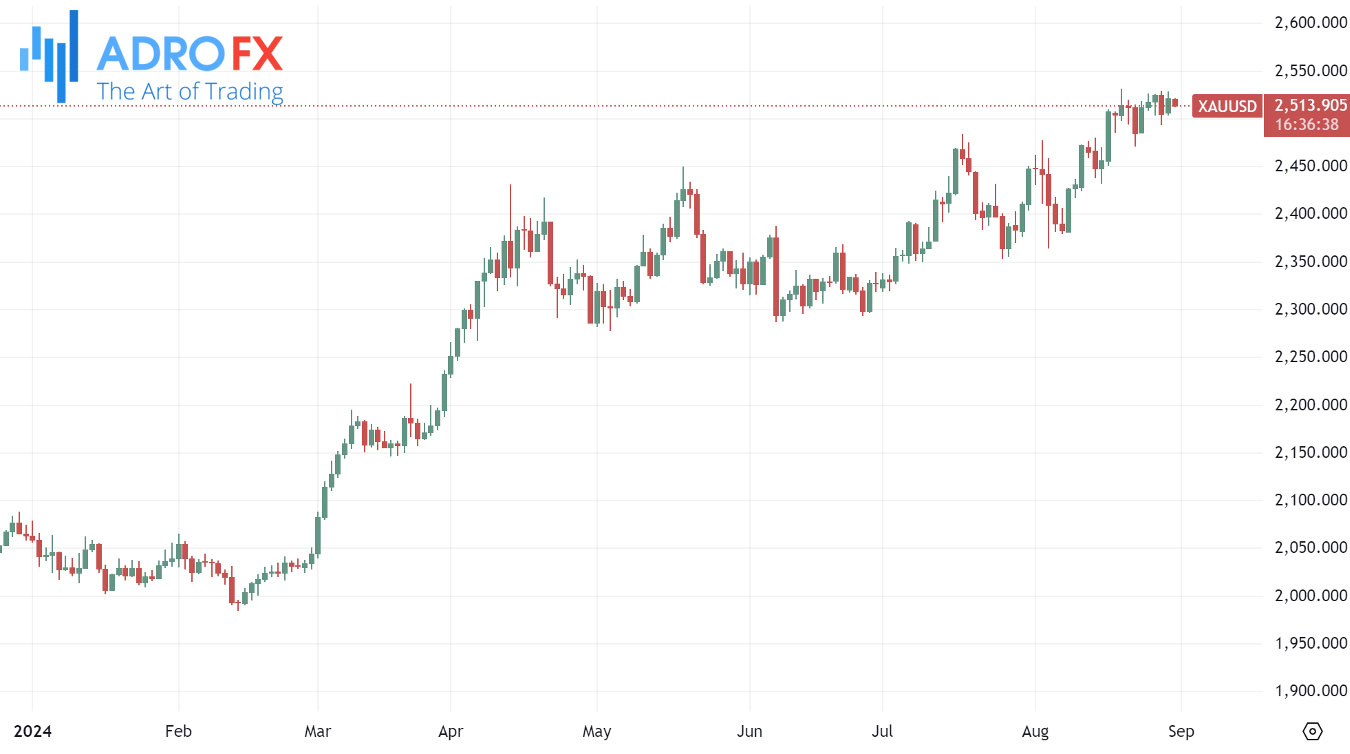
The GBP/USD pair continues to decline for the third consecutive session, trading near 1.3160 during Friday's Asian hours. This downward trend is largely due to the strengthening US Dollar following Thursday's stronger-than-expected economic data. Investors are now focused on the upcoming release of July’s US Personal Consumption Expenditure (PCE) Price Index later in the North American session.

In the second quarter, the US Gross Domestic Product (GDP) grew at an annualized rate of 3.0%, surpassing both the expected and previous 2.8% growth rates. Additionally, Initial Jobless Claims showed a decline to 231,000 for the week ending August 23, down from 233,000 and slightly below the forecasted 232,000.
However, further gains for the Greenback may be limited by dovish signals from the Federal Reserve. On Thursday, Federal Reserve Atlanta President Raphael Bostic, known for his hawkish stance, hinted that rate cuts could be on the horizon as inflation cools and unemployment rises. Bostic, however, prefers to wait for upcoming jobs and inflation reports before making any decisions at the Fed's September meeting.
The downside for the Pound Sterling might be cushioned by expectations that the Bank of England will keep interest rates higher for longer compared to the US Federal Reserve. The BoE recently cut rates by 25 basis points to 5% on August 1, and money markets are predicting an additional 40 basis points of cuts by year-end.
At the recent Jackson Hole Symposium, BoE Governor Andrew Bailey suggested that inflationary pressures may not be as severe as initially thought, but he also cautioned against rushing into further rate cuts, according to Reuters.
Meanwhile, the Japanese Yen gave back some of its recent gains against the US Dollar following Friday's release of Tokyo’s Consumer Price Index (CPI) data. The rise in Tokyo inflation reinforces the Bank of Japan’s hawkish monetary policy stance, supporting the JPY and exerting downward pressure on the USD/JPY pair.
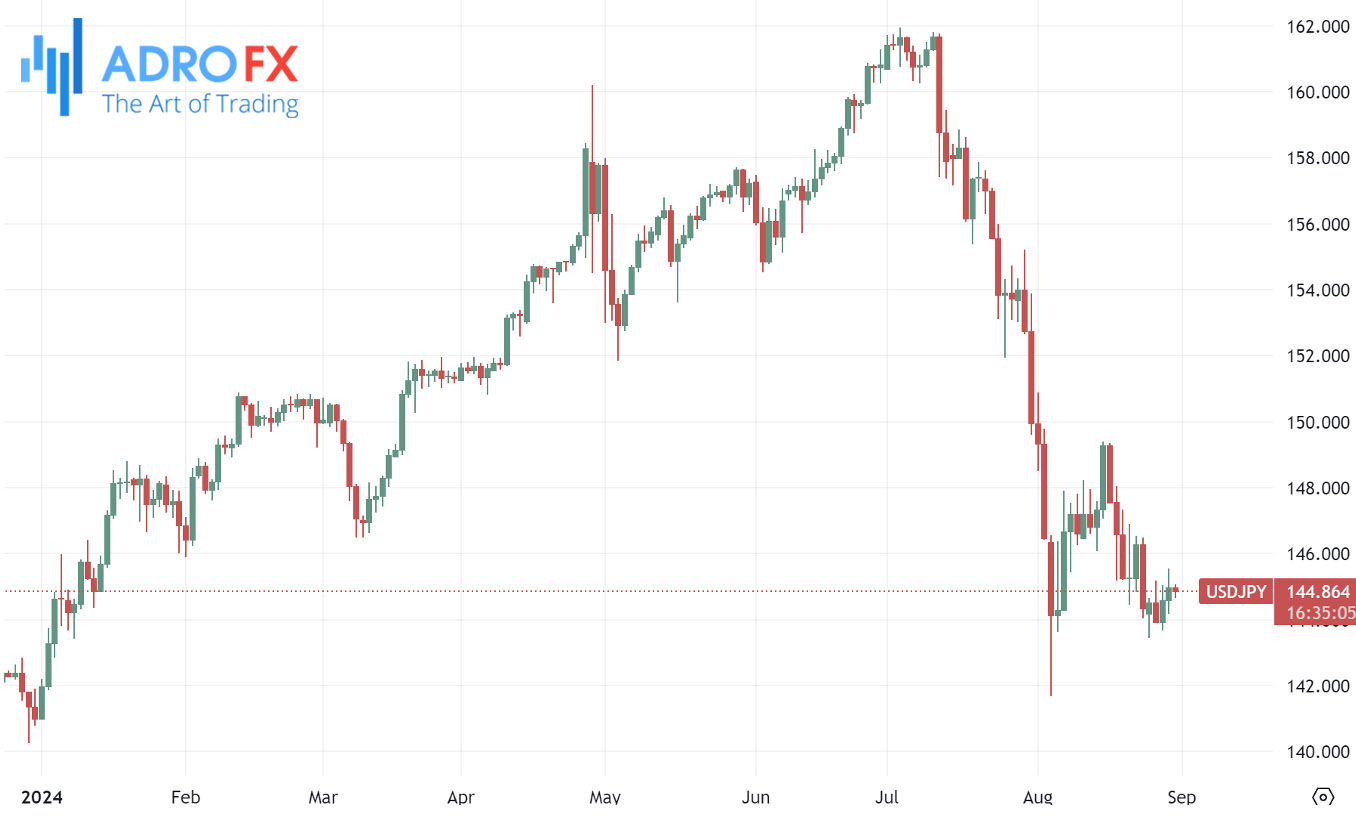
Tokyo's CPI increased to 2.6% year-on-year in August, up from 2.2% in July, while Core CPI rose to 1.6% YoY from the previous 1.5%. Additionally, Japan’s Unemployment Rate unexpectedly rose to 2.7% in July, exceeding both the market forecast and June's 2.5%, marking the highest rate since August 2023.
Despite this, the downside for the USD/JPY pair could be limited as the US Dollar maintains its strength following Thursday’s strong economic data. However, potential gains for the Greenback could be constrained by dovish comments from the Federal Reserve.
The Australian Dollar remains stable against the US Dollar after Friday's Retail Sales report showed no growth month-on-month in July, missing the forecasted 0.3% and previous 0.5% increases. However, stronger-than-expected US GDP data for the second quarter has put pressure on the AUD/USD pair.
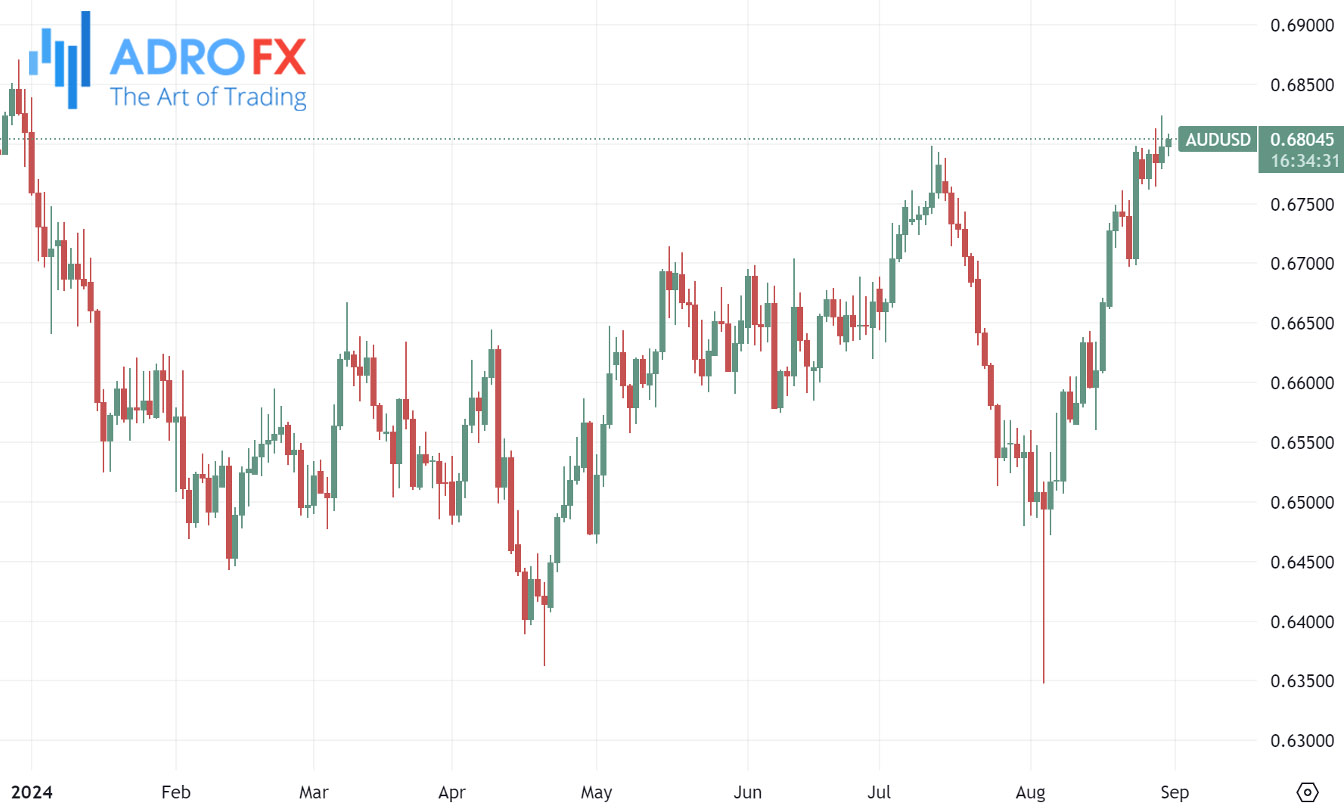
The AUD/USD pair could see further gains as July’s higher-than-expected Monthly CPI has fueled expectations that the Reserve Bank of Australia may adopt a more hawkish stance. Recent RBA minutes also revealed that board members are unlikely to consider a rate cut anytime soon.
Investors will be closely watching US inflation data for further clues on the size of potential Fed rate cuts. The core PCE Price Index, the Fed's preferred inflation gauge, is expected to rise by 2.7% YoY in July, up from 2.6% in June. A weaker-than-expected PCE reading could prompt the Fed to begin a rate-cutting cycle.









